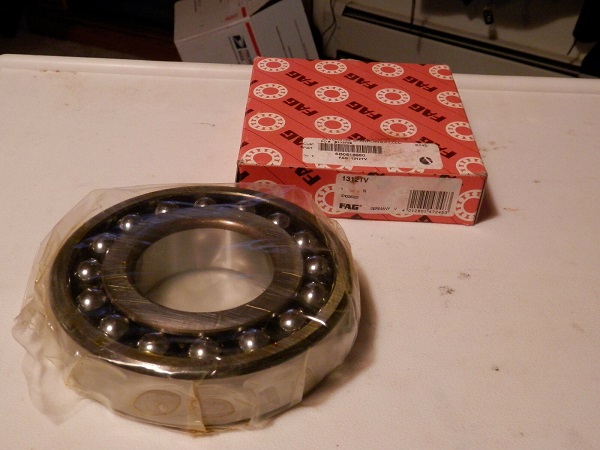FAG Bearing Arrangement and Support Structure Type
1. FAG bearing configuration form
The configuration of FAG bearings is a symmetrical arrangement of two radial bearings, which can bear pure radial load, and can also bear the combined effect of radial load and axial load. The configuration of FAG bearings is mainly divided into three types. They are: back to back, face to face and series.
(1) Back to back
The center of load is outside the center line of the FAG bearing.
Features and applications: The span between the fulcrums is large and the cantilever length is small, so the rigidity of the cantilever end is large. When the shaft is heated and elongated, the bearing clearance increases, and the FAG bearing will not be stuck and damaged. For the back-to-back tapered roller bearing support structure, the clearance changes are as follows:
a. When the cone tips of the outer raceway coincide, the axial expansion and the radial expansion are basically balanced, and the preset clearance remains unchanged
b. When the cone tips of the outer raceway are staggered), the radial expansion is greater than the axial expansion, and the working clearance is reduced
c. When the cone tips of the outer raceway do not intersect, the axial expansion is greater than the radial expansion, and the working clearance increases. If pre-tightening is used, the pre-tightening amount will decrease when the shaft is stretched under heat . FAG 1312 TV bearings online , pls click here :
(2) face to face
The center of load is within the center line of the FAG bearing.
Features and applications: Simple structure, convenient assembly and disassembly. When the shaft is heated and elongated, the FAG bearing clearance is reduced, which is likely to cause the bearing to jam. Therefore, special attention should be paid to the adjustment of the bearing clearance.
(3) Series connection:
The load center is on the same side of the FAG bearing centerline.
Features and applications: Suitable for situations where the axial load is large and multiple bearings are required to jointly bear.
2. Bearing support structure
(1) Fixed support at both ends: refers to the support with two supporting ends each restricting axial displacement in one direction.
Features and applications:
a. A shaft subjected to pure radial load or combined load with a small axial load. Generally, centripetal bearings are used to form fixed supports at both ends, and one of the supporting ends makes a loose fit between the outer ring of the FAG bearing and the housing hole, while leaving a proper gap between the outer ring and the end cover to accommodate the shaft Elongation by heat.
b. The shaft that bears the combined action of radial and axial loads. Angular contact FAG bearings are usually arranged face to face or back to back to form a fixed support at both ends. This kind of support can adjust the axial positioning of a certain FAG bearing ring to make the bearing reach the required clearance or preload, so it is especially suitable for machinery that requires high rotation accuracy.
C. Fixed floating support: It means that the position of the bearing, the shaft and the housing hole is relatively fixed at one supporting end of the shaft to achieve axial positioning, and the FAG bearing at the other end can move relative to the shaft or housing.
Features and applications: high operation accuracy, strong adaptability to various working conditions, so it is widely used in various machine tool spindles, worm shafts with higher working temperature, and long shaft supports with large spans. Axial positioning of shafts The accuracy depends on the axial clearance of the fixed end bearing.
(2) Fixed-end FAG bearings are usually selected:
a. Subject to radial load and certain axial load-FAG deep groove ball bearings;
b. Subject to radial load and bidirectional axial load-FAG diagonal contact ball bearings or tapered roller bearings;
c. Subject to radial load and axial load respectively-FAG radial bearings and thrust bearings, or different types of angular contact bearings.
(3) Floating support at both ends: It means that the bearings at the two support ends do not make precise axial positioning of the shaft.
Features and applications:
a. During work, even in an unfavorable heating state, FAG bearings will not be stuck;
b. Often used in occasions where the position of the shaft has been limited by other parts, such as herringbone gear bearing support
c. Almost all FAG bearings that do not need to be adjusted can be used for floating support. FAG angular contact ball bearings are not suitable for swimming support.
